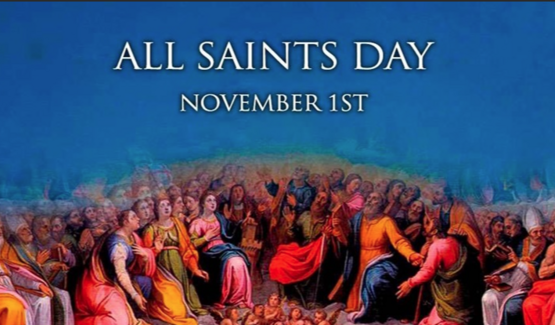All Saints Day - Saturday, November 1
-
 Saturday, November 1, 2025
Saturday, November 1, 2025The History of All Saints Day
The Solemnity of All Saints is one of the oldest and most joyful feasts of the Church. It celebrates not just the famous saints whose names we know—like St. Francis, St. Catherine, or St. Martin of Tours—but also the countless men and women throughout history who quietly lived lives of holiness and now share eternal life with God.Early Beginnings
From the earliest centuries, Christians honored those who gave their lives for the faith. Martyrs’ names were remembered at the Eucharist, and churches were often built over their tombs. As the number of martyrs grew, it became impossible to commemorate each one individually, so a common feast was established.
By the 4th century, Eastern Christians were already celebrating a feast for “all the saints” together. In Rome, Pope Boniface IV dedicated the Roman Pantheon to the Blessed Virgin Mary and all martyrs on May 13, 609, setting aside that day to honor all holy men and women.Moving the Date to November
Later, Pope Gregory III (731–741) dedicated a chapel in St. Peter’s Basilica to all the saints and fixed the date as November 1. Pope Gregory IV extended the celebration to the whole Church in the 9th century, giving us the solemn feast we know today.The Meaning of the Day
All Saints Day reminds us that the call to holiness is universal. The saints were not perfect, but they let God’s grace transform their lives. This feast reassures us that heaven is not reserved for a few extraordinary souls—it is the destiny God desires for each of us.
On this day, we honor both the great saints canonized by the Church and the “everyday saints”—family members, friends, and countless unknown believers who lived lives of faith, love, and sacrifice. We ask them to intercede for us, that we too may be faithful disciples.